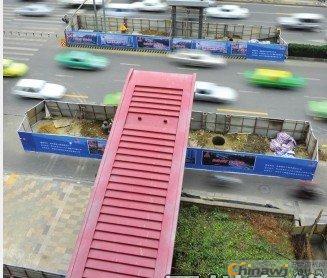The elevator system utilizes a fast loop to enhance the speed of the working components without increasing the hydraulic pump’s output flow. This is achieved by altering the effective working area of the hydraulic cylinder. Each elevator product comes with a detailed manual, and it is crucial for users to carefully read and follow the instructions to ensure safe and efficient operation. It's important to note that the reversing valve and the tubing in the differential circuit must be selected based on the flow rate during differential operation. If not properly chosen, excessive fluid resistance may occur, causing some of the hydraulic pump’s oil to return through the relief valve to the tank, which can significantly reduce the speed and make the system ineffective.
In most elevator systems, only a few electrical components are involved, primarily the power control box, the power unit, and the wiring connected to the lifting arm. If the elevator is used outdoors, especially in harsh weather conditions like rain or snow, it is recommended to provide proper shielding for the power control box and the external parts of the power unit. During summer, care should be taken to avoid direct exposure of the wiring to high temperatures, as this could lead to wire damage. Since lifting equipment typically involves conductive parts, any leakage should be treated with caution. Non-technical personnel should never attempt to touch or disassemble the system. In case of an electrical issue, the external power supply should be immediately turned off to prioritize personal safety. All maintenance work on the elevator must be performed by certified professionals, particularly when replacing electrical components, which requires specialized knowledge and skills.
The system also allows for switching between fast and slow movement. When the left solenoid of the reversing valve is activated, the valve shifts to the left position, enabling the hydraulic pump’s pressure oil and the oil from the right chamber of the cylinder to flow into the left chamber through the lower and left positions, creating a differential connection. This causes the piston to move quickly to the right. Once the fast motion ends and the working part triggers the motorized reversing valve, the pump pressure increases, opening the valve. At this point, the oil returning from the right chamber can only flow back to the tank through the speed control valve. When the right solenoid is energized, the piston retracts rapidly to the left. While this differential connection method is simple and cost-effective, the transition between fast and slow speeds may not be entirely smooth.

stainless steel commercial flat washers are used under bolt heads or nuts to increase the bearing surface area, or to offer protection so that the nut or bolt can be rotated without distortion of the bearing surface. Flat washers are also used to give tightness to a joint, to prevent leakage, and especially to distribute pressure under the head of a bolt or nut. Dimensional specifications are governed by ASME B18.21.1. Commercial flat washers generally have a larger outer diameter than SAE (Society of Automotive Engineers) flat washers, and can be utilized in nearly any application. stainless steel fasteners are commonly used in applications that require general atmospheric corrosion resist ance, such as chemical and food processing equipment. Stainless steel has a higher corrosion resistance than carbon steel.
Stainless Steel Washer,Ss Washer,Stainless Steel Square Washers,Black Metal Washers
Taizhou Hongchuang Hardware Co., Ltd. , https://www.taizhouhongchuang.com